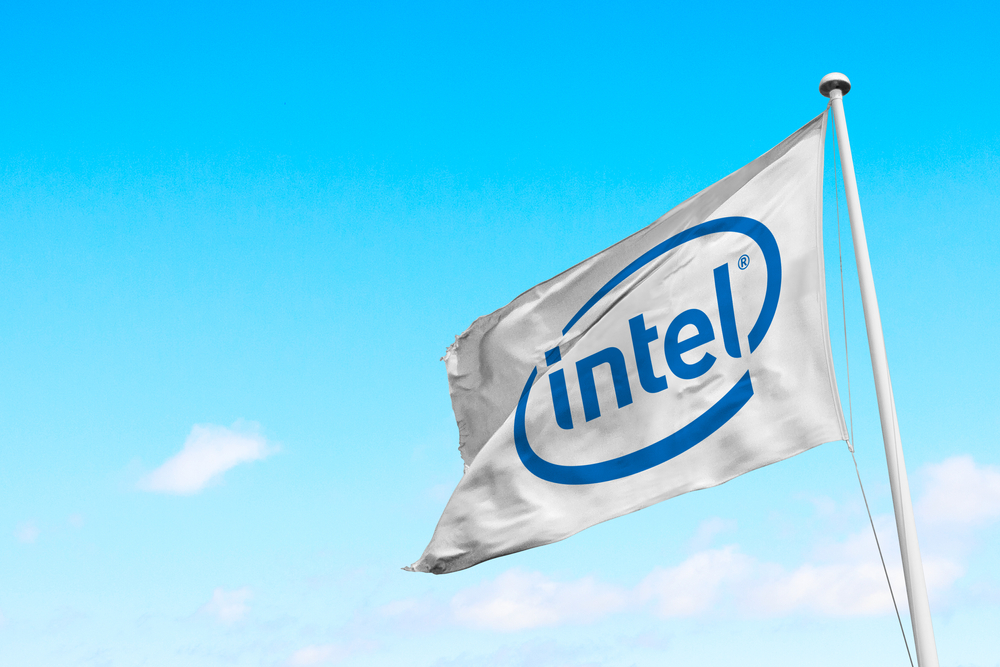Intel's SYCL play shows it's dialled down the aggression
After several turbulent years, Intel is showing a sudden willingness to collaborate with rivals


For decades, Intel’s relationship with chipmaking rivals such as AMD and Nvidia has been a feisty one, with the industry giant often seeking to exploit its domination at all costs.
In 1999, for example, the company got into a tangle with the US Federal Trade Commission (FTC) over how it was protecting technical information and patents. A decade later, the European Commission found “abuse of dominance” as Intel paid retailers and computer manufacturers to only use Intel CPUs.
The tables have turned in recent, years, however, with Nvidia becoming the most valuable US chipmaker in July 2020, and the company forced into a $20 billion plan to revitalise its business the following year. Part of this transformation has been a pivot towards acknowledging the strengths of its competition while venturing further into the cloud and software spheres.
Nevertheless, given its history, it’s perhaps a little unexpected that Intel, given its investments in the SYCL programming language, is now effectively offering an olive branch of friendship and asking its rivals: can’t we all just get along?
Speaking a universal language
“We should have an open programming language… that can run on Intel, AMD and Nvidia GPUs without changing your code,” Intel CTO Greg Lavender told the business site Venturebeat last October, as he sought to promote the company’s investments in SYCL, a Java-like programming language that bridges the gap between different CPU and GPU hardware.
It’s a language designed for software where processes are “heterogeneous” – tasks such as processing large amounts of data in parallel where you might throw a mass of GPUs at the problem. As such, it’s already used by various scientific supercomputers and in software such as GROMACS, which scientists use to simulate the behaviour of proteins, and which came in very handy during the early days of the pandemic.
What makes SYCL a significant break for Intel is that it is entirely open, and is by definition designed to make the same code work across different GPUs and CPUs. In theory, you could write the code and have it run on everything from an Intel i3 to an AMD Ryzen or an Nvidia GeForce GTX.
Stay up to date with the latest Channel industry news and analysis with our twice-weekly newsletter
To really show it meant business, Intel last year bought Codeplay, a company that has contributed extensively to SYCL, as part of what it calls its “open standards vision”.
Making code cheaper
RELATED RESOURCE

“Writing software is really expensive,” says Dr Tom Deakin, a lecturer in advanced computer systems at the University of Bristol, and chair of the SYCL advisory panel, who argues that given the choice, people want to write portable code that will run on different hardware.
“If they're going to have that code live for a long time, they can't afford to keep rewriting it.”
SYCL is not the first programming language to attempt to bridge the gap between different types of hardware, with the likes of OpenCL (which is managed by Kronos, the same group that runs SYCL), but what makes it different is the level of abstraction – essentially taking care of high-level processes, making it quicker and easier to write code.
Nvidia supports a similar toolkit called CUDA, but because it’s proprietary, it only works on Nvidia chips, which is perhaps why Intel is so keen to grow an alternative that can work on its chips too. “People don't really want to write CUDA to do that, because it locks them into only being able to run their programmes on Nvidia and not any other system,” he adds.
He argues this is good for coders, as it means there’s no risk of relying on the fortunes and decisions of only one company. “There's lots of compiler support for it and lots of those compilers support multiple devices from multiple vendors,” says Deakin. “I always like to think this multiple compiler position is the sign of a healthy ecosystem.”
Cracking the GPU market
This perhaps reveals why pushing SYCL isn’t an entirely altruistic move from Intel. The company has a close to 70% share of the GPU market if you include integrated graphics chips on devices such as laptops, but it controls only a tiny proportion of the discrete GPU market, which is dominated by Nvidia. SYCL could be an attempt to challenge Nvidia’s domination of GPUs.
“The choice they [Intel] had was do their own thing with their own badge, or try and build on something that's a bit more open,” Deakin continues. “If they made their own CUDA, then they'd make something that wouldn't be portable, and it's not attractive to break into that market.”
The move also aligns with Intel’s broader strategic shifts. The firm is in the process of reorganising its business away from controlling the entire chip ecosystem, to a more mercenary approach, where it will build whatever chips customers want.
“Their choice was an open approach and I think that’s a good thing,” says Deakin. “It means [developers] can still run programmes on Nvidia if they want to do that, but they can also run on Intel and it opens up the opportunity to compete.”
Bobby Hellard is ITPro's Reviews Editor and has worked on CloudPro and ChannelPro since 2018. In his time at ITPro, Bobby has covered stories for all the major technology companies, such as Apple, Microsoft, Amazon and Facebook, and regularly attends industry-leading events such as AWS Re:Invent and Google Cloud Next.
Bobby mainly covers hardware reviews, but you will also recognize him as the face of many of our video reviews of laptops and smartphones.
-
 Trump's AI executive order could leave US in a 'regulatory vacuum'
Trump's AI executive order could leave US in a 'regulatory vacuum'News Citing a "patchwork of 50 different regulatory regimes" and "ideological bias", President Trump wants rules to be set at a federal level
-
 TPUs: Google's home advantage
TPUs: Google's home advantageITPro Podcast How does TPU v7 stack up against Nvidia's latest chips – and can Google scale AI using only its own supply?
